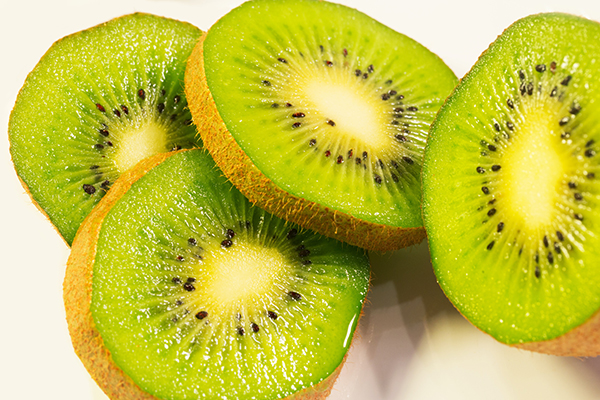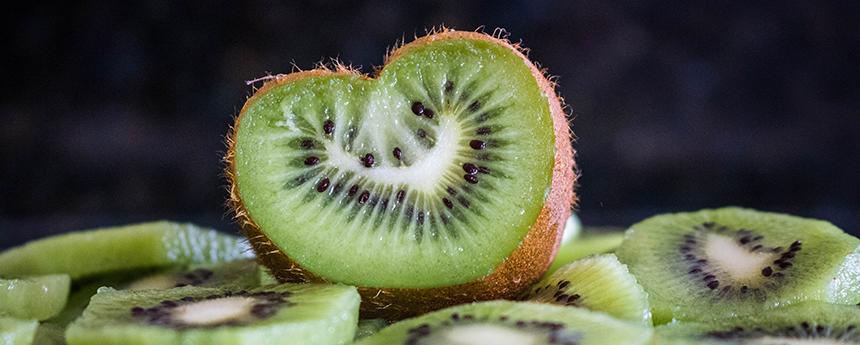- 2022-12-30
Kiwi Fruit Cultivation
1. The temperature
Suitable for kiwi planting areas, the annual average temperature of 11-20℃, extreme maximum temperature of 42.6℃, dormant period of the lowest temperature of 20℃ below zero.
Kiwi fruit germination period, the temperature below 3℃ may occur freezing phenomenon.
2. Water
The annual precipitation is generally required to be about 1000mm, and the air relative humidity is more than 70%.
3. Light
Kiwi fruit is a sunshine loving fruit tree, requiring annual sunshine hours of 1300-2600h.
4. Soil
High winds can reduce humidity in the air and wilt young plants.
Early spring winds can cause new branches to snap, and autumn winds can bruise fruit.

Cultivation guide
1. Construction of the garden
The annual average temperature is more than 10℃, the annual precipitation is about 1500mm and the distribution is uniform, and the air relative humidity is more than 80%.
Kiwi garden can be chosen in the altitude of 700m below the level ground and hills.
The mountain slope is below 25°.
It is a gentle slope with deep soil, loose soil, rich in organic matter, good drainage and water retention.
The mountain garden is generally 1-2hm2 as an operation area, and the flat area is generally 2-4hm2.
Kiwifruit is neither waterlogging resistant nor drought resistant in the growing season. Drainage ditch is set with a depth of 50-70cm.
To increase soil fertility, dig planting holes 1m wide and 0.6-0.8m deep before planting.
The amount of base fertilizer applied to each tree seedling was 4-5kg organic fertilizer, 0.5-1kg calcium magnesium phosphate fertilizer and 0.5-1kg lime.
Mix the fertilizer with the soil evenly, and finally pile the soil 15-20cm above the ground.
2. Holders
The commonly used frame types mainly include single - arm fence frame, T - shaped fence frame and horizontal greenhouses.
1. The height of the single-arm fence post is 2.6m, the buried part is 0.6m and the above-ground part is 2.0m.
Set up a pillar every 4-6m, pull up 3 iron wires, 0.6-0.65m apart.
2. T-shaped trellis is equipped with a beam at the top of the trellis, so that a shelf can function as both trellis and trellis.
The pillars of t-shaped scaffolding are 2.8m high, 0.8m buried in the earth, and 2.0m high in the aboveground part.
A beam (1.5-2.0m in length) is set at the top of the fence frame, and 3-5 iron wires are drawn on the beam with an interval of 0.4-0.7m.
3. Horizontal greenhouses
On the strut crisscross erects the beam or pulls on the wire, presents the grid form.
The pillar is 2.8m high, 0.8m buried in the soil, and 2.0m high in the abovementioned part.
The strut spacing is 5m*5m, and each strut is pulled with a wire 0.6m apart.
3. Species selection
According to local conditions, early, middle and late maturing varieties are reasonably matched, fresh food varieties and processed varieties are reasonably matched.
The suitable configuration ratio of male and female plants was 6:1.
4. Planting techniques
Generally, the row spacing of single arm hedgerows is 3*3m, and 70 plants are planted every 667m2.
The row spacing of t-shaped hedgerows was 3*4m, and 60 plants were planted every 667m2.
Horizontal greenhouses are 5m*5m, and 30 plants are planted per 667m2.
Planting time in general to autumn planting (end of November), but also in the spring (end of February) planting.
To the root neck and the ground flat as appropriate, when planting the root stretch you, planted after stepping tight, and water.
5. Soil, fertilizer and water management
The soil was watered by planting green manure, deep ploughing and increasing the use of organic fertilizer.
Reasonable interplanting, tree disc cover water and fertilizer.
The cultivated land depth is 10cm.
The base fertilizer is applied in autumn, mostly in october-november.
The amount of base fertilizer accounted for 60% of the year, mainly organic fertilizer.
A small amount of topdressing fertilizer was applied for several times, including before germination, rapid expansion of fruits and after harvest.
The fertilization method is circular furrow, with the furrow depth and width of 20-40cm.
The amount of fertilizer applied to each sapling was 50kg of organic fertilizer, 0.25kg of superphosphate and 0.25kg of potassium chloride.
When the adult fruit trees were in full fruit stage, we applied 60kg manure, 1kg superphosphate and 0.5kg potassium chloride to each tree.
Watering should be done at a depth of 40cm.
Kiwifruit water demand is large and afraid of waterlogging, set up drainage ditches, timely elimination of water on the ground, reduce the water table.
6. Cutting
After transplanting, 3 to 5 full buds were selected for cutting.
Germination of 3-5 main vine as the main vine.
Generally 4-6 fruiting branches are selected on the main vines, with a new shoot at intervals of 10-15cm.
Dormant pruning after winter leaves can leave 6-8 buds short above the fruiting site.
7. Flower management and harvesting
Flowering bees and artificial pollination are the key to improve seed setting rate.
The time to remove the flowers is when the buds are just growing, and the time to remove the fruits is within 20 days after the flowers are gone.
Generally, carbendazim should be sprayed once a week before harvest.
Fruits should be harvested in the morning when the sun is clear and the Chen lu has dispersed.




















